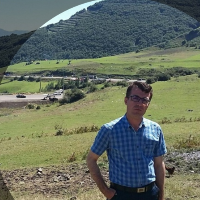Determining the Attitude of Government and Local Stakeholders in Participatory Decision-Making for Watershed Management Practices in Unar Chay Watershed, Meshgin Shahr, Iran
Implementing management practices and involving stakeholders is associated with challenges due to changing perceptions and expectations of stakeholders. Active participation in decision making of watershed management measures is determining the community characteristics, involved people and diverse groups of stakeholders. In this regards, the present research was planned to determine the different groups approach in participatory decision-making for watershed management measures in the Unar Chay Watershed of Meshgin Shahr, Ardabil Province via Policy Profile Ratio (PPR) and Index of Resolution (IR).
To achieve the considered goal, the target experts/managers have been chosen based on different background including natural resources, environment, regional water company, nomadic affairs, Jahad griculture, NGOs members, watershed residents, students, university professors and citizen groups. Through designing a questionnaire, the approach of different groups was examined based on analyzing the effect of watershed management projects on improving the income of watershed residents and evaluating the watershed community participation in the projects implementation and conflict reducing and increasing of local community’s cooperation. Then, the PPR and IR were calculated and analyzed for all stakeholder groups.
The results showed that the value of PPR is between zero and -11. So that, among the study groups, the least PPR value was related to the subject of improving the watershed community income for the NGOs group which they were as opponents of the decision. Some of the study groups have a moderate approach towards the considered subjects. Additionally, the IR value was ranged between -50 and 12. The lowest value of IR was obtained for students group (opponents of the decision) towards the Women's empowerment and support via local cooperatives and organizations.
The social profile ratio, while determining and prioritizing the views of different decision-maker and stakeholder groups, can be useful in effectively managing actions based on the strengths and weaknesses of the watershed participation process. In this regard, strengthening the participation of stakeholders and effective groups as well as removing barriers in low-impact groups can be considered in the planning process.
-
Estimation of river bank erosion and effective factors in Polealmas-Gilande reach, Balkhlochai River in Ardabil
*, Arezoo Eshaghzadeh, Shokrollah Asghari,
Hydrogeomorphology, Autumn 2024 -
Changes in base flow indices and flow duration curves of rivers originated from Sabalan Mountain under the influence of climatic variables
*, Fariba Esfandyari Darabad, Maasoomeh Gholizadeh Aghbelagh, Ali Nasiri Khiavi
Geographic Space, -
Modeling the Distribution of Juniper Species (Juniperus excelsa M.Bieb.) Using Multivariate Adaptive Regression Splines (MARS) and Generalized Linear Model (GLM) in Southern Ardabil and Northern Zanjan Provinces
Azad Kakehmami, Ardavan Ghorbani*, Mehdi Moameri, , Zeinab Hazbavi, Sahar Ghafari
Journal of Rangeland, -
Determining Changes in Water and Energy Balance in Different Time Scales Using Budyko Curve in the Nir Watershed, Ardabil
*, Nazila Alaei,
Whatershed Management Research, -
Determining Community Attitudes toward Various Aspects of the COVID-19 Pandemic Using the Social Profile Ratio Technique
, Fahimeh Mirchooli, *
Journal of Human Environment and Health Promotion, Winter 2024





